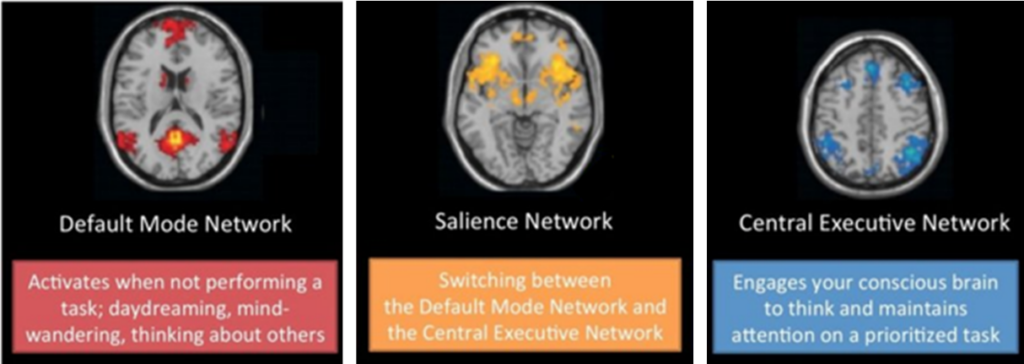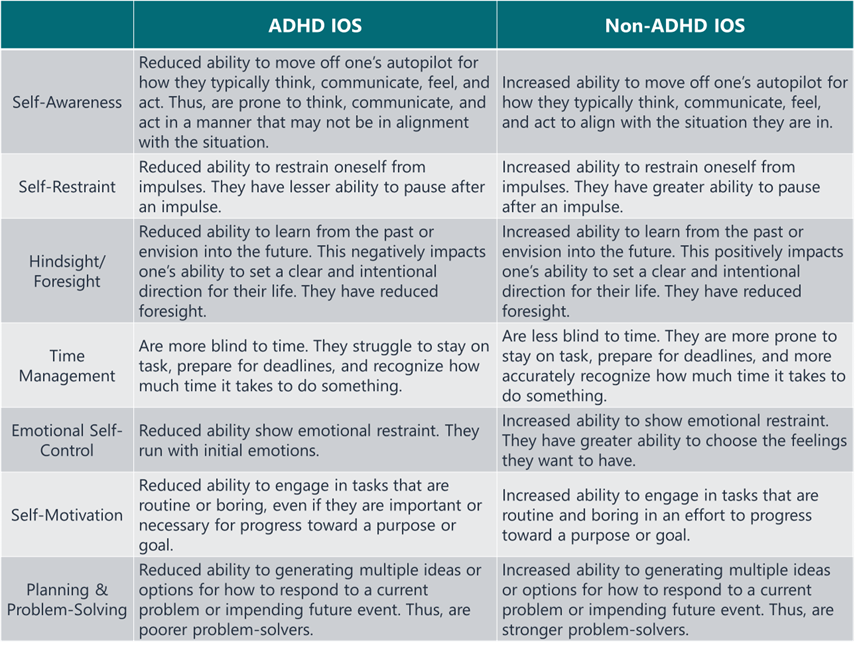If you haven’t followed my writings, here are some key things to understand:
- We have an internal operating system that dictates nearly all of our perceiving, thinking, and operation.
- Vertical development is a form of development that focuses on upgrading our internal operating system.
- The quality of our leadership is dictated by the quality and sophistication of our internal operating system (i.e., our vertical altitude)
Understanding these key ideas, I have been learning about various factors that affect the quality and sophistication of our internal operating system, and how to address those factors if need be.
For example, neuroscience reveals that trauma is a factor that impacts the quality and sophistication of our internal operating system, which if left unaddressed, has a negative effect on our ability to lead.
Lately, I have been exploring another factor that affects the quality and sophistication of our internal operating system: ADHD. I would like to share some of my learnings here.
The Neuroscience of Our Internal Operating System
To understand the impact of ADHD on our internal operating system, it is helpful to know about the neuroscience behind our internal operating system.
Neuroscience reveals that there are three primary brain networks responsible for how we interpret, process, and respond to our world. They are the salience network (SN), the default mode network (DMN), and the central executive network (CEN). In combination, they effectively run our internal operating system.

The more these brain networks work effectively together, the more accurately we interpret, process and respond to our world (i.e., we have a higher quality and more sophisticated internal operating system). We are able to see safe things as safe and dangerous things as dangerous.
The less these brain networks work effectively together, the less accurately we interpret, process and respond to our world (i.e., we have a lower quality and less sophisticated internal operating system). We tend to see safe things as dangerous and dangerous things as safe.
Here are some examples of seeing safe things as dangerous:
- We see failure as an indication that we are a failure, instead of as an opportunity to learn and grow
- We see being wrong as an indication that we are not smart, instead of as an opportunity to find truth and think optimally
- We see having problems as a setback, instead of as a step in our journey to fulfill our purpose and reach our goals
- We see other people as untrustworthy, instead of as valuable people and partners
Some examples of seeing dangerous things as safe are:
- Seeing drugs and alcohol as a great way to deal with stress
- Seeing people who are bad for us as good relationship partners
- Seeing criminal activity as a viable means of improving our financial situation
How ADHD Affects Our Internal Operating System
ADHD is a neurodevelopmental disorder that primarily affects our Central Executive Network. This means that ADHD is a disorder of our executive functioning.
Research reveals that about 5% of adults have ADHD, and that less than 20% of adults who have ADHD know that they have ADHD. My personal experience working with leaders is that more than 5% of leaders have ADHD. It is important to note that there are different types of ADHD (e.g., complex, hyperactive, and inattentive), and men tend to have hyperactive, while women tend to have inattentive. Inattentive tends to go undiagnosed a lot more than hyperactive or complex.
The impact of ADHD on one’s executive functioning is twofold:
- Difficulty persisting toward goals while resisting distractions
- Difficulty inhibiting impulsive actions
These difficulties lead to the following differences in one’s internal operating system:

In fact, research has found that people with ADHD generally operate at 30% reduced ability across these seven factors than those with without ADHD.
ADHD & Leadership
If we have a leader with ADHD and they are prone to struggle with self-awareness, self-restraint, hindsight/foresight, time management, emotional self-control, self-motivation, and planning and problem-solving, do you think they are going to make for a great leader? Unlikely.
In my experience working with executives, about 1 in 20 (5%) have admitted to me that they have ADHD. But, knowing of these executive functioning limitations, I would say at least 20% of executives demonstrated strong signs and signals of having ADHD.
Generally, if I hear subordinates grumble about their leader, it is related to at least one of the seven areas above.
Can Leaders or People with ADHD Upgrade Their Operating System?
ADHD is a genetic disorder, but that doesn’t mean that it can’t be treated effectively. Stated differently, with appropriate treatment and structure, people with ADHD can upgrade their internal operating system to operate at a higher level.
One of the best analogies for treating ADHD is that of treating poor eyesight.
If someone has poor eyesight and it never goes diagnosed, they will never do anything about it. They will continue to operate at a reduced capacity than people with good eyesight.
But, if poor eyesight is diagnosed, a variety of options for improving their eyesight is available. And with treatment, they are able to take action or receive treatment to see just as good as someone with good eyesight.
The same thing goes for those with ADHD. If it goes undiagnosed, nothing will be done to address it. And, unfortunately, for most adults with ADHD, that is currently the case. From my experience, there are a lot of executives and leaders with ADHD that are unaware that they have ADHD.
ADHD Treatment
There are a variety of ways to treat ADHD. These include:
- Therapy (e.g., cognitive behavioral therapy)
- Coaching
- Reasonable accommodations
- Medication
- Lifestyle changes (e.g., getting regular exercise, maintaining a balanced diet)
- Cognitive training
- Neurofeedback therapy
One of the reasons that I started studying ADHD is because my wife and children were all recently diagnosed with ADHD. As part of their treatment plans, they have engaged in neurofeedback therapy, and they have all seen significant improvements in their executive functioning.
Note, some of these treatments are more focused on working around the disorder (e.g., reasonable accommodations, lifestyle changes), while others are more focused on improving the workings of one’s brain (i.e., vertical development; neurofeedback therapy).
What Can Organizations Do?
While leaders with ADHD can do great things (there is a reason why they were promoted into a leadership role to begin with), there are a number of negative consequences that organizations experience because of leaders’ ADHD.
For example, in one organization I work with, I am almost certain that the CEO has ADHD. One of the ways it manifests is with a lack of foresight. He really struggles to look into the future and set a clear purpose, vision, and strategy for the organization.
In my opinion, organizations need to be more proactive about having conversations about mental health, which includes topics like ADHD, trauma, neurodivergence, and well-being. If we can destigmatize these things, people will be more likely to seek the treatment and support that will help them operate at a higher level.
In fact, I think that organizations should offer to have leaders and employees tested for ADHD, and provide benefits that include the treatment and support for ADHD if diagnosed with it. To me, there is no harm in getting tested, only benefits.
How Can I Help?
I am not a medical professional, but I can facilitate workshops related to mental health and well-being, and connect these concepts to vertical development. If that is something you would like in your organization, let’s connect (call or email).










